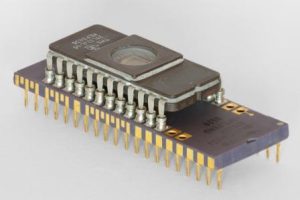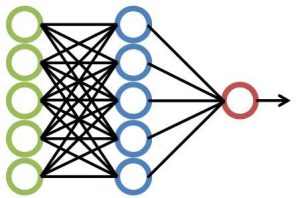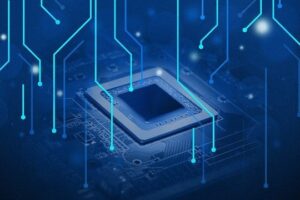Contents
Erasable Programmable Read Only Memory (EPROM): Unveiling the Digital Archives – 7 important Applications
This article delves into the fascinating world of Erasable Programmable Read Only Memory (EPROM), exploring its history, functionality, applications, and the importance of its erasable and programmable nature.
In the ever-evolving world of technology, where data storage and retrieval are paramount, one term that has stood the test of time is “Erasable Programmable Read Only Memory” or EPROM. EPROM is a fundamental component of modern computing, often hidden behind the scenes, but it plays a crucial role in preserving digital data.

The Birth of Erasable Programmable Read Only Memory (EPROM)
EPROM, which stands for Erasable Programmable Read Only Memory, emerged as a revolutionary concept in the early days of digital computing. It was developed to address the limitations of the existing read-only memory (ROM) technology. The need for EPROM arose from a growing demand for memory chips that could be both programmed and erased as needed.
In 1971, Dov Frohman, an engineer working at Intel Corporation, introduced the first EPROM. This innovation marked a significant milestone in the history of computer memory technology. The EPROM was designed to store data permanently, similar to ROM, but with the added advantage of being reprogrammable. This unique feature set the stage for a wide range of applications across various industries.

How Erasable Programmable Read Only Memory (EPROM) Works
At its core, EPROM utilizes a specific type of floating-gate transistor to store digital data. Unlike traditional ROM, where data is hardwired into the memory cells during manufacturing, EPROM allows users to modify its content. This flexibility is achieved through a process called “programming.”
To understand the programming process, it’s crucial to grasp the basic structure of an EPROM cell. Each EPROM cell consists of a floating-gate transistor and a control gate. The floating gate is insulated from the rest of the transistor by a thin oxide layer.
When the EPROM cell is in an erased state, the floating gate has no charge, and it is electrically isolated. However, during the programming process, a high voltage is applied to the control gate, which causes electrons to tunnel through the oxide layer and become trapped in the floating gate. This trapped charge alters the transistor’s behavior and defines the stored data.
Reading the data from an EPROM cell is similar to reading from a standard ROM. When a voltage is applied to the control gate, the transistor’s conductivity is determined by the presence or absence of charge on the floating gate. This information is then converted into binary data and made available to the computer’s central processing unit (CPU) for further processing.
Erasability: EPROM’s Unique Feature
The erasable nature of EPROM is one of its most distinguishing features. Traditional ROMs are permanently etched with data during manufacturing and cannot be altered or erased. In contrast, EPROM allows users to reset the memory cells to their initial state, effectively erasing the stored data.
EPROM erasure is achieved through a process called “UV erasure.” EPROM chips are designed with a transparent quartz window on top. When the user decides to erase the memory, the EPROM chip is exposed to ultraviolet (UV) light. This UV light causes the trapped electrons in the floating gate to be released, returning the EPROM cell to its blank state. Once erased, new data can be programmed onto the EPROM, making it a versatile and reusable storage medium.
![]()
Applications of Erasable Programmable Read Only Memory (EPROM)
EPROM’s unique characteristics have made it an indispensable component in various industries and applications. Here are some of the key areas where EPROM has played a pivotal role:
- Computer BIOS: EPROM chips were initially used to store the BIOS (Basic Input/Output System) in personal computers. The ability to update the BIOS to fix bugs or add new features without replacing the entire chip was a significant advantage.
- Embedded Systems: EPROMs found a home in embedded systems, where firmware and configuration data could be modified during product development or updates.
- Gaming Consoles: Older gaming consoles, such as the Nintendo Entertainment System (NES), used EPROM chips to store game data. This allowed for the modification of game content and the creation of game hacks and mods.
- Instrumentation and Measurement: EPROMs were commonly used in instruments and measurement devices for storing calibration data and firmware updates.
- Automotive Electronics: EPROMs played a crucial role in automotive electronics, storing engine control unit (ECU) firmware and other critical data.
- Historical Archives: EPROMs were also used for preserving historical data and archives in various fields, including aerospace and scientific research.

The Evolution of EPROM: EEPROM and Flash Memory
While EPROMs were groundbreaking in their time, they did have limitations. UV erasure required the removal of the chip from the circuit, making it inconvenient for some applications. As technology advanced, two significant developments took place: EEPROM (Electrically Erasable Programmable Read Only Memory) and Flash memory.
EEPROM improved upon EPROM by allowing for electrical erasure and reprogramming of individual memory cells. This made EEPROM more user-friendly and eliminated the need for UV light exposure. However, EEPROM had slower write and erase times compared to EPROM.
Flash memory, on the other hand, represented a leap forward in memory technology. It combined the electrical erasability of EEPROM with faster write and erase times, making it ideal for a wide range of applications, including USB drives, solid-state drives (SSDs), and memory cards. Flash memory also introduced the concept of sectors and blocks, allowing for more efficient data management.
Despite the advancements in EEPROM and Flash memory, EPROMs continue to hold a special place in the history of computing. Their erasable and programmable nature laid the foundation for modern non-volatile memory technologies.
The Legacy of Erasable Programmable Read Only Memory (EPROM)
As we reflect on the history and significance of EPROM, it becomes clear that this technology has left an indelible mark on the world of digital storage. Its versatility, erasability, and reprogrammability have made it a vital tool in various industries, from computing to aerospace to gaming.
EPROM’s legacy lives on in modern non-volatile memory technologies like EEPROM and Flash memory. These successors have built upon the principles of EPROM, offering faster, more convenient, and more robust solutions for data storage and retrieval.
In conclusion, Erasable Programmable Read Only Memory, or EPROM, represents a crucial chapter in the evolution of digital memory. Its erasable and programmable nature has made it a valuable asset in countless applications, and its influence can still be seen in today’s non-volatile memory technologies.
As we continue to push the boundaries of computing and data storage, we should always remember the humble EPROM as one of the pioneers that paved the way for the digital age.
Whether you are a computer enthusiast, a tech professional, or simply curious about the history of technology, EPROM is a term that should not be forgotten. Its impact on the world of computing is undeniable, and its story is a testament to human ingenuity and innovation.
So, the next time you encounter the term “Erasable Programmable Read Only Memory,” take a moment to appreciate the role it has played in shaping the digital world we inhabit today.
Friends, you have just read the post “ Erasable Programmable Read Only Memory (EPROM): Unveiling the Digital Archives- 7 important Applications” we hope you will like this post. If yes then share it with your friends and keep visiting our website for more such posts.
If you interested to read about Astrology & Hindu Religion : Click here
Also Read : Cloning HDD: Your Ultimate Guide to Data Migration and Backup- with 5 valuable tips
Also Read : Mastering GDPR Settings : Protecting Data and Privacy in the Digital Age – with 5 benefits
Also Read : Chandra Yan 3: India’s Ambitious Lunar Odyssey Continues
Also Read : Network Topologies: definition,types, classification,examples etc-A Comprehensive Guide
Also Read : Database Management System (DBMS) in detail with it’s definition,types, classification,examples
Also Read : Find My RAM: A simple method to know RAM of Computer
Also read : Windows 11 vs Windows 10: A Comprehensive Comparison of the Two Operating Systems
Also read :What is Bus in Computer Systems: Understanding Its Role in Data Transfer
Also read :Computer Memory: An Introduction to Storing and Retrieving Data
Health & Wellness
Also Read : Heavy Periods after Pregnancy: Causes, Symptoms, and Management are explained in detail
Also Read : Women’s Reproductive Health: Empowering Women through Knowledge and Care
Also Read : Fatty Lower Abdomen No More: Secrets to a Trim and Toned Waistline



